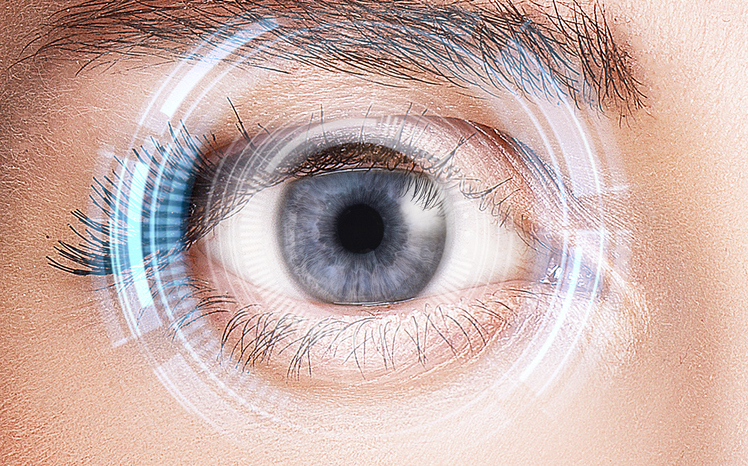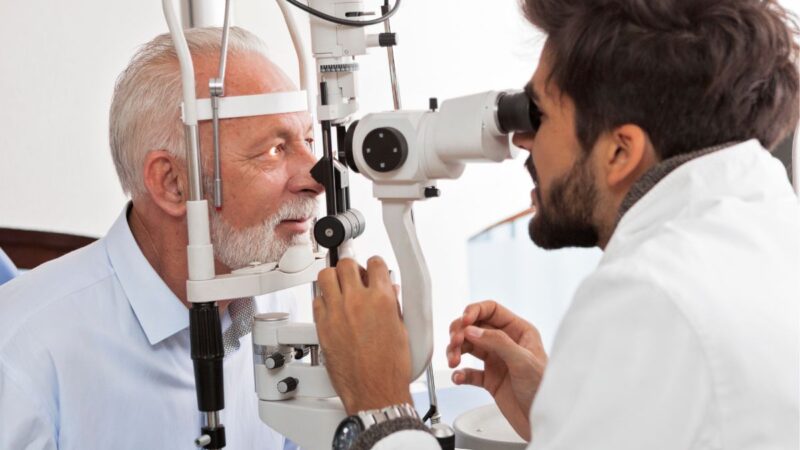Premier Refractive Surgeries in AL: Advanced Techniques at Our Clinic
Wiki Article
Exploring the State-of-the-Art Technologies Used for Identifying and Dealing With Eye Conditions
In the realm of ophthalmology, the evolution of technology has actually dramatically boosted the devices offered for identifying and dealing with various eye conditions. From sophisticated imaging innovations that offer comprehensive insights right into eye structures to robotic-assisted surgeries that provide unequaled accuracy, the landscape of eye treatment is frequently advancing. With the assimilation of artificial intelligence in diagnostics, gene therapy innovations, and virtual reality rehabilitation, the possibilities for improving patient outcomes are increasing at a fast speed. The convergence of these advanced innovations holds the promise of changing the field of ophthalmology, offering brand-new avenues for individualized and reliable therapies.
Advanced Imaging Technologies
Advanced Imaging Technologies have actually reinvented the area of ophthalmology by supplying in-depth and exact visualization of the eye structures. Optical Coherence Tomography (OCT) sticks out as an essential technology in this world. OCT utilizes light waves to capture high-resolution cross-sectional photos of the retina, enabling the identification of minute structural changes. This non-invasive strategy help in the early detection and monitoring of numerous eye problems such as macular degeneration, diabetic retinopathy, and glaucoma.Moreover, Fundus Photography is one more necessary tool in ocular imaging. This method involves recording in-depth pictures of the rear of the eye, including the retina and optic disc. Fundus Digital photography helps in documenting the development of eye diseases, reviewing treatment efficacy, and informing patients concerning their eye health and wellness.

Robotic-Assisted Procedure
Robotic-assisted medical procedures have substantially progressed the capacities of ocular surgical treatment, introducing a new period of precision and effectiveness in dealing with various eye problems. By incorporating robot innovation into procedures, ophthalmologists can attain unmatched precision and control, resulting in improved person results.One of the key advantages of robotic-assisted surgery in ophthalmology is the boosted mastery and stability it supplies to specialists. The robotic arms can execute accurate movements with a high level of accuracy, permitting for delicate treatments with very little invasiveness. This level of accuracy is particularly valuable in surgical treatments involving the retina, where also minor mistakes can have significant ramifications for a patient's vision.
In addition, robotic-assisted surgical systems provide real-time imaging and responses to the cosmetic surgeon, allowing them to make informed choices during the procedure. This modern technology improves the doctor's situational understanding and permits adjustments to be made immediately, ensuring ideal outcomes for the client.
Expert System in Diagnostics
With the advancement of cutting-edge innovations boosting medical precision in sensory treatments, the integration of Artificial Knowledge in diagnostics has actually become an essential growth revolutionizing the field of eye treatment. Expert System (AI) formulas are being increasingly utilized to examine intricate information from imaging technologies like optical coherence tomography (OCT) and fundus digital photography to help in the very early discovery and accurate diagnosis of different eye problems. These AI systems can successfully recognize patterns and abnormalities in images that may not be discernible to the human eye, allowing quicker medical diagnosis and therapy preparation.AI formulas can also predict illness progression, suggest individualized therapy strategies, and analyze the performance of interventions. By streamlining the diagnostic process, AI not only enhances the efficiency of eye care professionals but also improves patient outcomes by enabling timely interventions. As AI remains to advance, its role in diagnostics is expected to increase, supplying brand-new opportunities for very early treatment and individualized treatment in the field of ophthalmology.
Gene Therapy Innovations
In the world of ocular improvements, current strides in gene therapy innovations have actually triggered significant rate of interest amongst scientists and healthcare professionals alike. Gene treatment holds tremendous promise in transforming the treatment of different eye problems by targeting the hidden hereditary causes. By presenting genetic material right into cells to compensate for abnormal genetics or to supply a missing gene, genetics therapy offers a tailored strategy to attending to inherited eye problems such as retinitis pigmentosa, Leber hereditary amaurosis, and others that were previously taken into consideration untreatable.
As study in genetics treatment remains to breakthrough, the capacity for customized therapies for a bigger series of eye problems expands, offering new expect people with hereditary eye diseases.
Digital Reality Recovery
Digital truth rehabilitation has actually become an advanced approach in boosting the healing and rehabilitation procedures for people with various aesthetic disabilities. retina service near me. By mimicing real-world atmospheres via immersive innovation, virtual reality offers an one-of-a-kind platform for vision treatment and rehab. This innovative technique enables people to take part in interactive workouts and activities created to improve aesthetic acuity, depth perception, eye sychronisation, and total visual performanceOne secret benefit of virtual truth recovery is its capability to tailor treatment programs based upon the details requirements cataract care service and capacities of each patient. Via real-time comments and tracking, healthcare professionals can track progression, change interventions, and provide personalized treatment to enhance results. Additionally, digital truth technology can create a secure and controlled room for individuals to practice visual tasks, conquer difficulties, and develop self-confidence in a digital setting before transitioning to real-world situations.
Final Thought
In verdict, the advancements in imaging innovations, robotic-assisted surgical procedures, artificial intelligence diagnostics, gene therapy advancements, and digital fact recovery have considerably enhanced the diagnosis and treatment of eye conditions. cataract care service. These state-of-the-art technologies have revolutionized the field of ophthalmology, enabling more precise and effective treatments. As technology proceeds to advance, the future of eye care looks encouraging with the potential for much more cutting-edge remedies to boost person end resultsIn the world of ophthalmology, the development of innovation has significantly enhanced the tools readily available for detecting and dealing with various eye conditions. Fundus Digital photography aids in documenting the progression of eye illness, reviewing therapy effectiveness, and educating patients concerning their eye wellness.
Man-made Intelligence (AI) algorithms are being significantly used to evaluate intricate information from imaging innovations like optical comprehensibility tomography (OCT) and fundus digital photography to help in the very early detection and precise diagnosis of different eye conditions.In conclusion, the developments in imaging technologies, robotic-assisted surgeries, synthetic intelligence diagnostics, gene treatment technologies, and digital fact rehab have considerably improved the diagnosis and therapy of eye problems. As modern technology proceeds to progress, the future of eye care looks promising with the potential for also more cutting-edge options to enhance client outcomes.
Report this wiki page